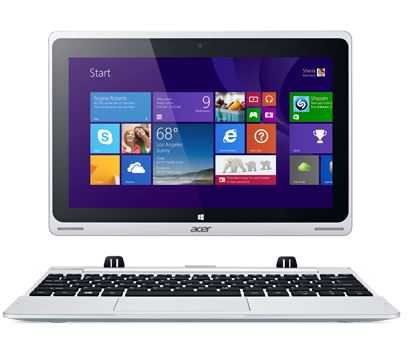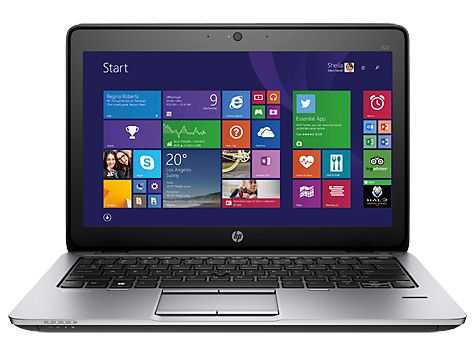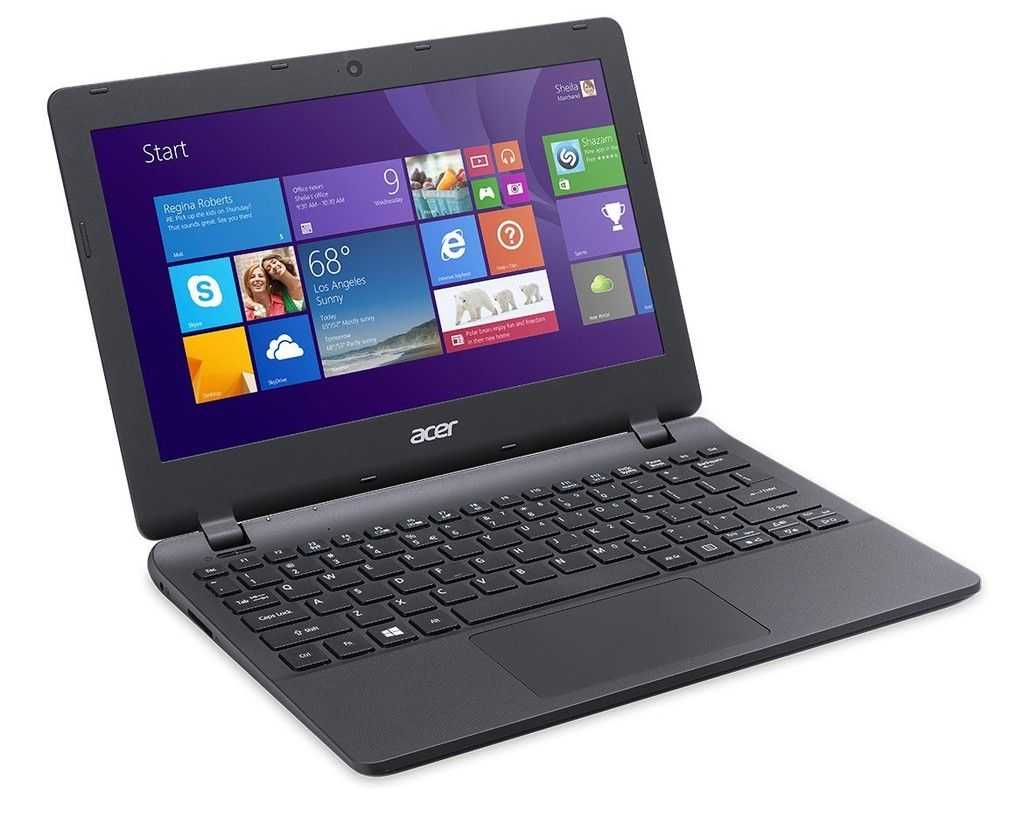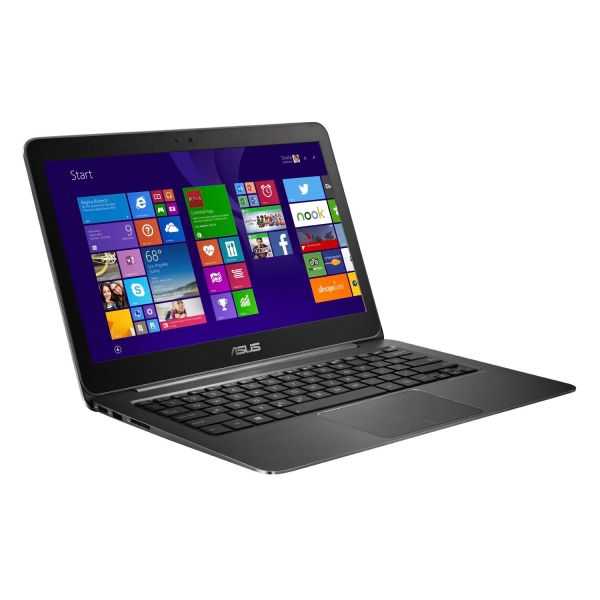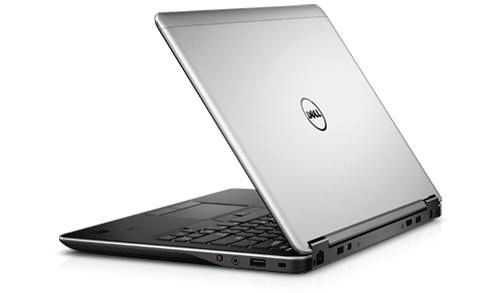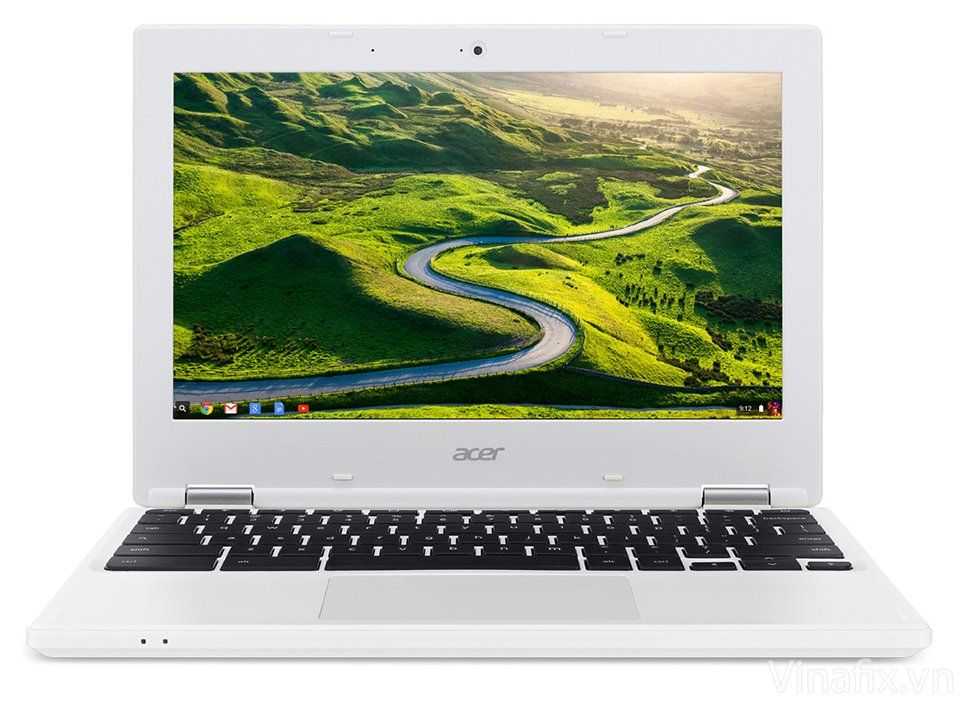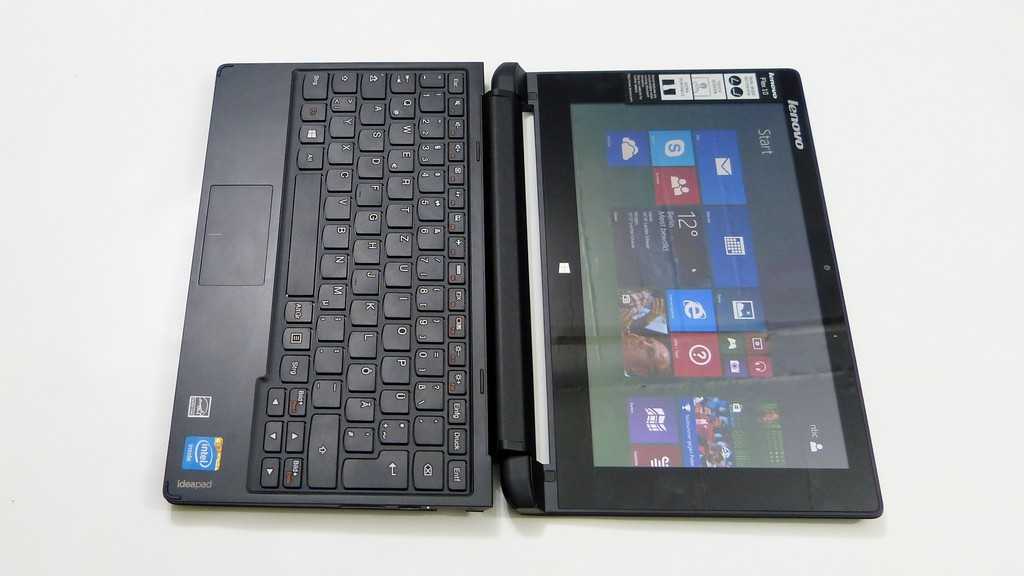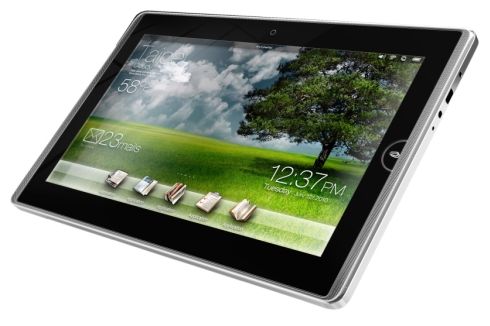
Posted on 20 July 2010
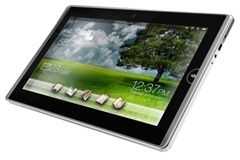
Back at Computex Asus announced two new tablets, a 12 inch touting Windows 7 device called the Eee Pad EP121 and the Windows 7 Embedded, 10 inch EP101TC. Windows 7 Embedded runs on the Windows CE platform which Microsoft isn’t pushing as a finalised tablet ready operating system but instead a base in which OEM’s like Asus can create their own user interfaces for.
Well today Netbook News reports that Asus has decided to ditch Windows 7 Embedded in favour of Android.
Which version of Android is still a mystery although rumour has it that it could possibly come with Android 3.0, also known as Gingerbread. If that is to be the case the earliest we would see this device is Q1 of 2011, although with Gingerbreads rumoured support for higher resolutions, this would tie in nicely.
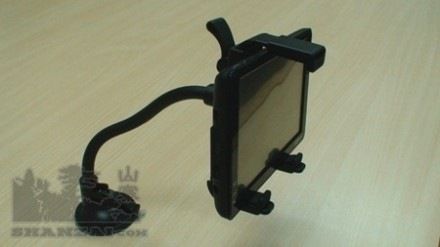
Posted on 07 July 2010
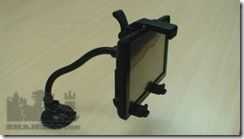 We’ve been following this one carefully. Our review late last year indicated potential but it wasn’t just the Cortex A8 core that got us excited, it was the promised Android build too. We waited a long time but it looks like its finally arrived. Shanzai.com have the WiTS A81E [product information– Wits A81] in their hands and are starting a three-part review.
We’ve been following this one carefully. Our review late last year indicated potential but it wasn’t just the Cortex A8 core that got us excited, it was the promised Android build too. We waited a long time but it looks like its finally arrived. Shanzai.com have the WiTS A81E [product information– Wits A81] in their hands and are starting a three-part review.
The feedback so far is that it’s “one of the best, if not the best Shanzai tablet.” Shanzai means ‘imitation’ or ‘copy’ but this one has been around so long that it really stands on its own two feet. Check out the Part-1 video below and stay tuned to Shanzai.com for parts two and three. Google Apps and Marketplace is a possibility but I’m guessing you’ll have to hack that on. Despite that, it looks like a bargain for around $200-$250
Shanzai.com First look at A81 with Android 2.1
Is this going to be a competitor to the Huawei S7? There’s no 3G or GPS but for the price, it looks like it should be considered.
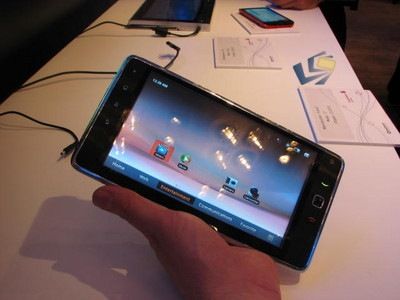
Posted on 26 June 2010
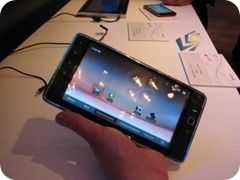 Following a slight set-back on a ultra mobile PC product that was due to turn up today I’ve decided to order something else to take my mind off the pain. It’s the Huawei S7 Android tablet.
Following a slight set-back on a ultra mobile PC product that was due to turn up today I’ve decided to order something else to take my mind off the pain. It’s the Huawei S7 Android tablet.
Why?
Because this device impressed me at Computex. It’s the first 7 inch Android tablet to ship with a complete Google-certified Android build on it. That means Marketplace and Google-app-goodness unlike the disappointing experiences I’ve seen with the Archos 5 and 7, the SmartQ7, the Compaq Airlife and the tens of others tested at various trade expos over the last year. I’m not 100% sure that what I saw in Taipei is what I’m going to see after the unboxing (the ultimate shock will be come if it doesn’t have the Marketplace) but I’m fairly confident that I’m getting a capacitive 7 inch 3G/voice-enabled Google-approved Android device. It’s the finer points that I’m not sure about like GPS, upgrade to 2.2, battery life etc. Still, on a business purchase I’ve just paid about 270 pounds which I think is great value for this hardware.
Did I buy it for me? Not really although this could seriously become the coffee-table PC that the iPad was for a week when I had it. With SD cards that you can write to it will be the perfect image viewer. It’s no retina screen but will do a great job of showing a web page without having to zoom. It doesn’t have the book content that the iPad has yet but when Amazon’s Kindle application comes along, this will make a better reader than the iPad. How about that one-handedness? Only 500gm too! I really want to see if there’s a docking port/cable/accessory and if it has an electronic compass and GPS, Google Sky Map will be incredible. The main reason I bought it is to continue my testing with mobile operating systems on larger form factor devices. We’ve been through the Airlife 100 and the Dell Streak so now it’s time for something in the middle.
Do you remember Origami? The 7 inch slate devices were initially marketed at the young social user and were said to have a price of $500. When they appeared on the market they were $1000 and lasted for 3 hrs maximum before needing a charge. The UI was productivity and pen focused and there was no such thing as Twitter. The Huawei S7 is the Origami device done right….i think!
Delivery is due in just over a week but don’t hold your breath. Expansys have a habit of slipping dates so it could be a few weeks! Whatever happens, when it turns up you’ll find an unboxing here within hours. We’ll also run a live Q&A session for you too so you can come and see the device and ask questions.
Expansys UK order page is here [This is not an affiliate link and this article/purchase is unrelated to any Expansys advertising that you might see on UMPCPortal or Carrypad.]
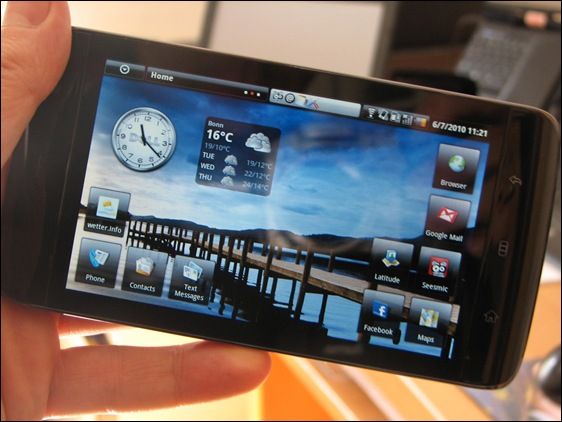
Posted on 07 June 2010
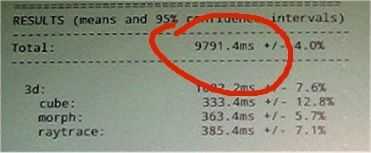
Posted on 05 June 2010
At an ARM event in Taipei this week I was fortunate enough to have a few minutes with a Tegra 2-based tablet prototype known as ‘Harmony.’ It’s a fairly standard tablet with a capacitive touchscreen and weighing in at the 700gm iPad-weight. You’ll see more details in the video below.
The interesting thing was the SunSpider javascript benchmark I did. As you might know, SunSpider is a well-recognized test of a browser’s ability to run javascript and it serves as a good data point for working out how fast a processor is. As far as I know, most, if not all, the javascript processing is done by the CPU.
You’ll see a result of 9.8 seconds on the video which is about the same as you’d see on the iPad. The iPad uses what we believe is an ARM A8 core, or at least something very similar. However, that doesn’t mean that dual-core Tegra 2 is only as powerful as a single-core A4 CPU because the two browsers are vastly different. The javascript engine on the iPad is super-fast where the engine used on the Android 2.1 browser isn’t.
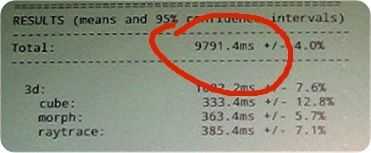
- Android 2.1 on Tegra 2 9 seconds (Tegra prototype shown in video)
- Android 2.2 on Snapdragon 1Ghz 6 seconds. (Nexus One, Google V8 engine)
- Android 1.6 on Snapdragon 1Ghz 24 seconds (Xperia X10)
- Android 1.6 on Snapdragon 1Ghz – 54 seconds (Dell Streak prototype)
- Chrome on Atom 1.6 2 seconds (average netbook, Google V8 engine)
As you can see there, the Android browser is at least 4 times less efficient in processing javascript on version 1.6 than it is on 2.2. I suspect that version 2.1 is close to 1.6 in its efficiency too which means that the Tegra 2 is over 200% faster than Snapdragon. Given that it has two cores, it’s not surprising. A single A9 core (in my estimate) brings about 20% more raw CPU performance over A8 so the figures look correct.
Add in the 4X improvement that you’ll see with Froyo’s Google V8 processing engine and there you go! Tegra2 with Froyo will be able to process javascript as well as a 1.6Ghz netbook. Just imagine what the 1.2Ghz dual-core Snapdragon will do!
More information about high-end ARM platforms in our primer, here.
We’ve already seen that ARM can beat Atom in certain low-end Atom scenarios and cross referencing to some other figures I have seem to confirm that ARM is going to challenge Atom in raw CPU. If only they could sort the operating system out and get some productivity apps going, we’d have some interesting smartbooks out there.
Chippy Sidenote: 2 cores needs 2x power! It would be interesting to work out the CPU drain figures under these javascript test conditions. Also note that system performance is not directly related to CPU performance. A lot of work has to go into a lot of other hardware and a lot of other software to get a system running ‘fast.’ Please remember that when Intel and ARM enter the clock-speed game over the next few years!
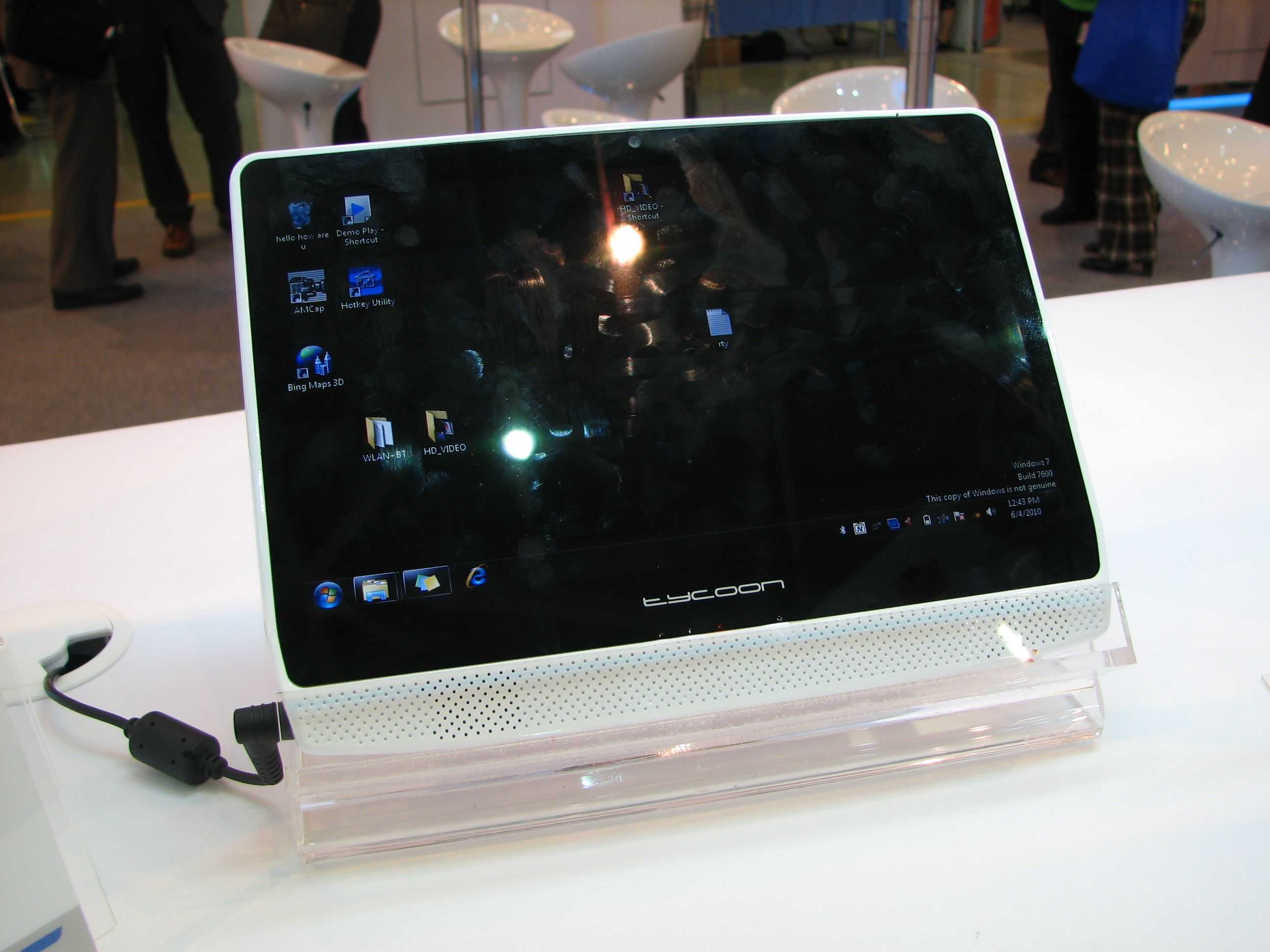
Posted on 04 June 2010
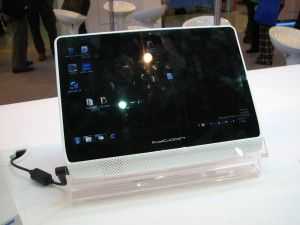 FIC are looking for customers for their 10 inch Tycoon tablet based on the netbook platform (N455 cpu) and running Windows 7. I was a little disappointed with what looks like 2-3hrs battery life (running a netbook platform for more than 3 hours in a sub 1KG package is almost impossible) but the screen was fantastic. Touch, contrast, sharpness and color were better than I’ve seen for a long time. FIC expect to have this ready in Q3 but wouldn’t tell us if they had a customer yet. We suspect that it will get a lot of interest at Computex. FIC are looking to do a design based on Oak Trail for 2011.
FIC are looking for customers for their 10 inch Tycoon tablet based on the netbook platform (N455 cpu) and running Windows 7. I was a little disappointed with what looks like 2-3hrs battery life (running a netbook platform for more than 3 hours in a sub 1KG package is almost impossible) but the screen was fantastic. Touch, contrast, sharpness and color were better than I’ve seen for a long time. FIC expect to have this ready in Q3 but wouldn’t tell us if they had a customer yet. We suspect that it will get a lot of interest at Computex. FIC are looking to do a design based on Oak Trail for 2011.

Posted on 04 June 2010
 This is an interesting one. The design looks slim, working and, well, almost complete! Intel’s reps tell us that it’s just a prototype and maybe this is something ASUS worked on before they decided on the 12 inch Eee Pad that we saw at the ASUS press conference but we like it and hope they pursue it on the Oak Trail platform in 2011. It looks like it’s currently on the Menlow platform.
This is an interesting one. The design looks slim, working and, well, almost complete! Intel’s reps tell us that it’s just a prototype and maybe this is something ASUS worked on before they decided on the 12 inch Eee Pad that we saw at the ASUS press conference but we like it and hope they pursue it on the Oak Trail platform in 2011. It looks like it’s currently on the Menlow platform.
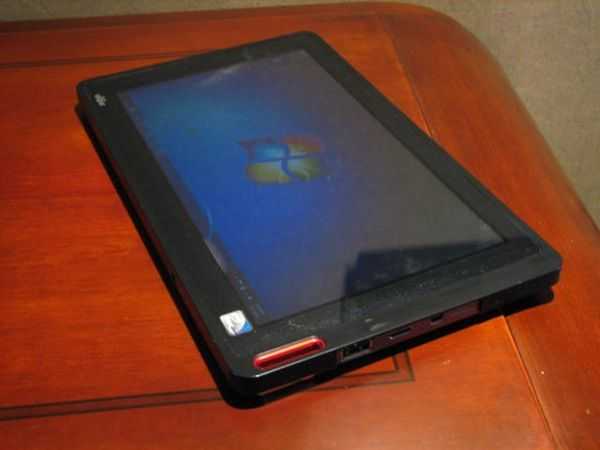
Posted on 04 June 2010
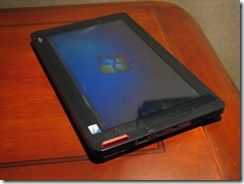 It’s slim and interesting but don’t get too excited about the X10 with Windows because the Windows version a trial design by Viliv who are looking for someone else to manufacture it. While we were discussing the device though it was interesting to hear that Viliv are confident they can transition on Menlow, the Intel platform they are currently using, to Oak Trail in 2011. It brings hope that we’ll get a number of ‘refresh’ devices with lighter, slimmer designs and better battery life. Thanks to Viliv for the invitation to view these behind-the-scenes devices at Computex 2010.
It’s slim and interesting but don’t get too excited about the X10 with Windows because the Windows version a trial design by Viliv who are looking for someone else to manufacture it. While we were discussing the device though it was interesting to hear that Viliv are confident they can transition on Menlow, the Intel platform they are currently using, to Oak Trail in 2011. It brings hope that we’ll get a number of ‘refresh’ devices with lighter, slimmer designs and better battery life. Thanks to Viliv for the invitation to view these behind-the-scenes devices at Computex 2010.
Check out the Android version of this design here.



















